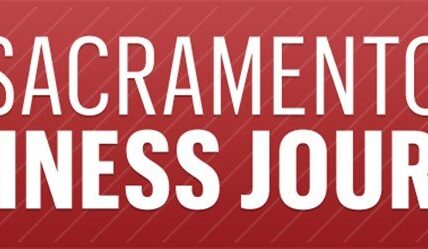Curious about how to say “standing on business” in sign language? Let’s dive right in. Picture this: you’re in a professional setting, needing to convey the concept of “standing on business” using ASL. Wonder no more – we’ve got you covered. Ready to enhance your communication skills and make a lasting impression? Let’s learn the sign language for “standing on business” together. Join us on this journey of linguistic mastery and connection.
How to Say “Standing on Business” in Sign Language
Sign language is a beautiful and expressive form of communication used by individuals who are deaf or hard of hearing. It is not only a way to convey words but also emotions, feelings, and nuances that may be lost in spoken language. In this article, we will explore how to say “standing on business” in sign language, delving into the gestures and expressions that make up this phrase.
The Basics of Sign Language
Before we get into the specific signs for “standing on business,” let’s take a moment to understand some fundamentals of sign language:
- Sign language uses hand movements, facial expressions, and body language to convey meaning.
- Each sign represents a concept or word, and the grammar of sign language differs from spoken languages.
- Facial expressions are crucial in sign language, as they can change the meaning of signs or indicate emotions.
Signs for “Standing on Business”
When translating the phrase “standing on business” into sign language, it is essential to break down the meaning and find signs that accurately convey the message. Here are some signs that can be combined to express this concept:
1. Sign for “Standing”
To sign “standing” in American Sign Language (ASL), follow these steps:
- Stand up straight with your feet shoulder-width apart.
- Place your dominant hand flat, palm facing down, and hold it near your chest.
- Extend your non-dominant hand forward, palm facing up, as if indicating a surface.
- Move your dominant hand down towards your non-dominant hand, keeping your fingers together.
This sign visually represents the action of standing.
2. Sign for “Business”
Incorporating the concept of “business” into the sign involves a more abstract representation. Here’s how you can convey “business” in sign language:
- Hold both hands up, palms facing each other, at chest level.
- Using your dominant hand, create a briefcase shape by forming a fist and extending your thumb and pinkie finger outward.
- Move your dominant hand in a small circle, mimicking the idea of a bustling business environment.
Combining the signs for “standing” and “business” creates a cohesive expression for “standing on business” in sign language.
Expressing Nuances and Emotions
One of the fascinating aspects of sign language is its ability to convey subtle nuances and emotions through facial expressions and body language. When signing “standing on business,” consider the following:
- Use a serious facial expression to convey the importance or seriousness of the business aspect.
- Lean slightly forward while signing to indicate engagement or involvement in the business realm.
- Adjust the speed and intensity of your signs to reflect the dynamic nature of business activities.
By incorporating these elements, you can enhance the meaning behind the phrase “standing on business” in sign language and make your communication more engaging.
Practice and Fluency
As with any language, practice is key to improving your fluency in sign language. Here are some tips to help you master the sign for “standing on business”:
- Practice regularly by signing phrases related to business and incorporating them into your daily conversations.
- Watch videos or attend sign language classes to learn from experienced signers and improve your skills.
- Engage with the deaf community to gain a better understanding of sign language nuances and cultural aspects.
Remember, fluency in sign language comes with time and dedication, so don’t be afraid to make mistakes and keep practicing to enhance your communication abilities.
In conclusion, sign language provides a unique and expressive way to communicate complex ideas such as “standing on business.” By understanding the signs, gestures, and facial expressions involved, you can effectively convey this concept in a visually engaging manner. Remember to practice regularly, seek opportunities for learning, and immerse yourself in the sign language community to improve your fluency and communication skills. Sign language is a beautiful language that transcends barriers and fosters connection, so embrace the journey of learning and expressing yourself through sign language.
D.K. Metcalf Scores & Says “Standing On Business” in Sign Language 🤯
Frequently Asked Questions
How can I express “standing on business” in sign language?
To convey the concept of “standing on business” in sign language, you can sign “stand” followed by signing “business” using appropriate hand movements and gestures.
What is the sign for “stand” in sign language?
The sign for “stand” in sign language involves extending one hand upward, palm facing inward, while keeping the other hand in a fist and placing it vertically underneath the extended hand.
How do you sign “business” in American Sign Language (ASL)?
To sign “business” in ASL, use both hands to create the sign. Place one hand flat, palm facing down, fingers slightly spread, and tap the top of the hand with the fingertips of the other hand a couple of times.
Can you provide an example sentence using the sign for “standing on business” in sign language?
Certainly! An example sentence using the sign for “standing on business” could be: “In our company, we prioritize standing firmly on business principles.”
Are there variations in sign languages for expressing the concept of “standing on business”?
Yes, different sign languages may have variations in how they express the concept of “standing on business.” It’s essential to be familiar with the specific sign language you are using to communicate effectively.
Final Thoughts
In sign language, to express “standing on business,” make the sign for “STAND” followed by the sign for “BUSINESS.” Ensure clear hand movements and facial expressions for effective communication. Practice and repetition are key to mastering sign language fluency. Remember to maintain eye contact and be patient as you learn to accurately convey “standing on business” in sign language. Sign language fluency requires dedication and consistent practice, so keep practicing to improve your skills in expressing concepts like “standing on business” accurately.





